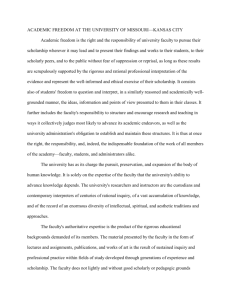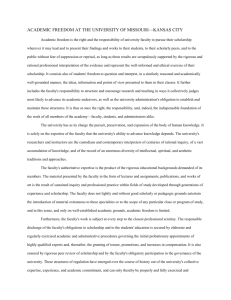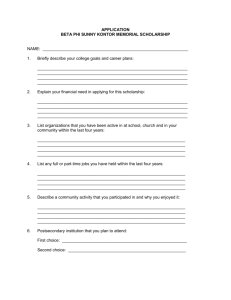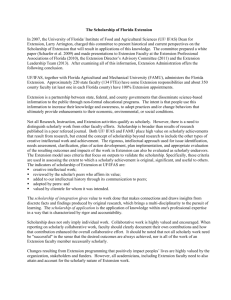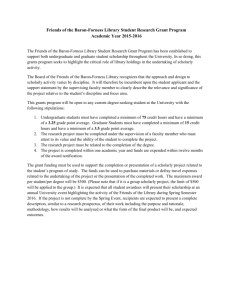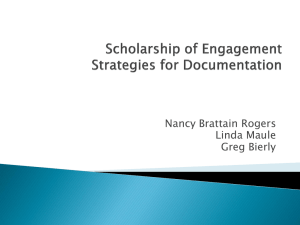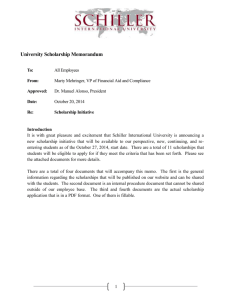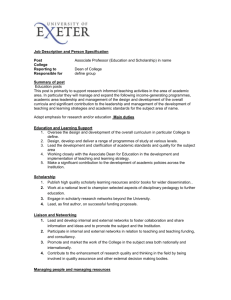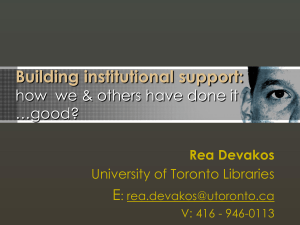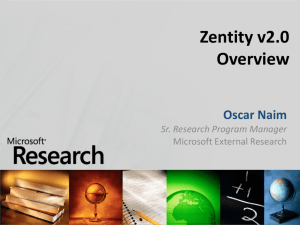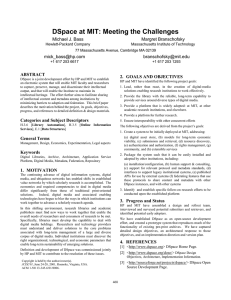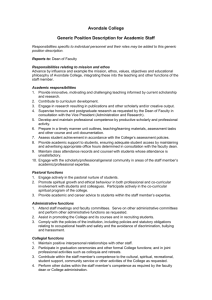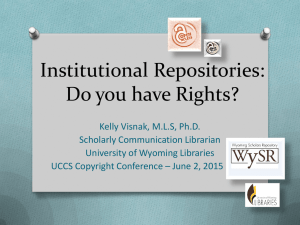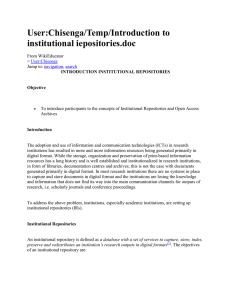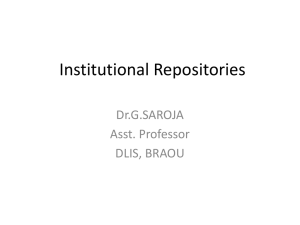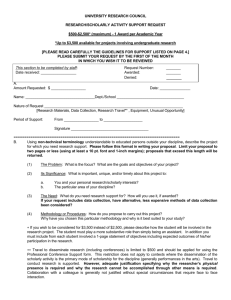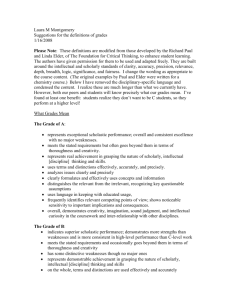Institutional Repositories: A Workshop on Creating an Infrastructure
advertisement
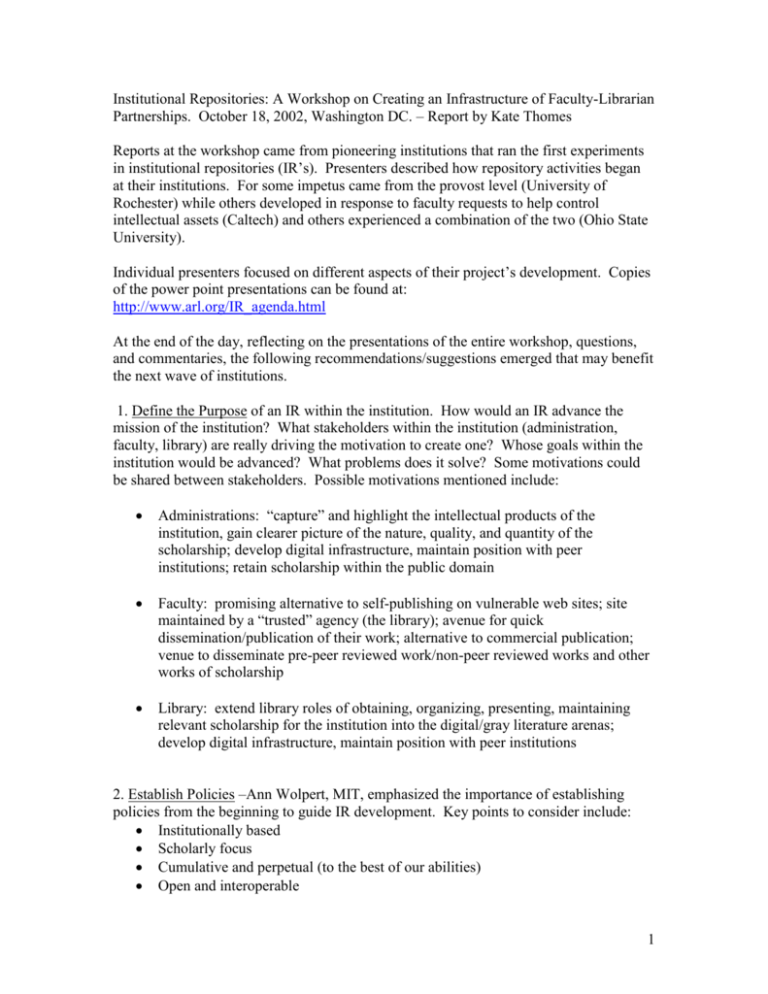
Institutional Repositories: A Workshop on Creating an Infrastructure of Faculty-Librarian Partnerships. October 18, 2002, Washington DC. – Report by Kate Thomes Reports at the workshop came from pioneering institutions that ran the first experiments in institutional repositories (IR’s). Presenters described how repository activities began at their institutions. For some impetus came from the provost level (University of Rochester) while others developed in response to faculty requests to help control intellectual assets (Caltech) and others experienced a combination of the two (Ohio State University). Individual presenters focused on different aspects of their project’s development. Copies of the power point presentations can be found at: http://www.arl.org/IR_agenda.html At the end of the day, reflecting on the presentations of the entire workshop, questions, and commentaries, the following recommendations/suggestions emerged that may benefit the next wave of institutions. 1. Define the Purpose of an IR within the institution. How would an IR advance the mission of the institution? What stakeholders within the institution (administration, faculty, library) are really driving the motivation to create one? Whose goals within the institution would be advanced? What problems does it solve? Some motivations could be shared between stakeholders. Possible motivations mentioned include: Administrations: “capture” and highlight the intellectual products of the institution, gain clearer picture of the nature, quality, and quantity of the scholarship; develop digital infrastructure, maintain position with peer institutions; retain scholarship within the public domain Faculty: promising alternative to self-publishing on vulnerable web sites; site maintained by a “trusted” agency (the library); avenue for quick dissemination/publication of their work; alternative to commercial publication; venue to disseminate pre-peer reviewed work/non-peer reviewed works and other works of scholarship Library: extend library roles of obtaining, organizing, presenting, maintaining relevant scholarship for the institution into the digital/gray literature arenas; develop digital infrastructure, maintain position with peer institutions 2. Establish Policies –Ann Wolpert, MIT, emphasized the importance of establishing policies from the beginning to guide IR development. Key points to consider include: Institutionally based Scholarly focus Cumulative and perpetual (to the best of our abilities) Open and interoperable 1 She encouraged people to recognize the differences between traditional library collections and IR’s and to plan policies and procedures accordingly. Key differences include: Content comes directly from faculty (not “selected” in traditional manner) Preservation carries a new weight Distribution has a new meaning Metadata will vary Partnerships with faculty will take on new dimensions Specific technical and procedural issues to address: What formats will be supported? What migration/preservation commitments can be made for various formats/objects? Would digital rights management software be embedded into objects? Who decides what content will be placed in the IR? Under what circumstances might an object be removed from the IR? 3. Identify Content appropriate for maintenance in an institutional repository. Clearly describe the differences/similarities between the IR and the U. Archives, for example (a very broad example) IR would be for current scholarship of active faculty, archives for collected works of former faculty. 3a. Needs Assessment. Identify what intellectual products faculty feel are not adequately communicated within the current system of scholarly communication due to factors such as publication cycle (i.e. time delays) or limits of print as a medium (i.e. dance or music). Intellectual products and communication needs vary between disciplines and fields and would need to be fully explored. Types of material mentioned include: Pre-prints Working papers Course ware Technical reports Conference papers Editorials of a scholarly nature Multimedia objects Interactive works 4. Implementation. Identify essential features for success (ease of access and operation, ease of contributing, clarity of purpose). Decide, on an institutional basis, who are the “gatekeepers” and what scholarly criteria are determinant. Who decides what material is appropriate for inclusion in the repository? Does each department or unit make this decision? How is that work flow managed? As with the issue of content the answers to these questions may vary by institution and even by department or discipline. The 2 DSpace project at MIT captures digital research materials directly from faculty while California’s eScholarship project accepts content that units and departments pre-approve. 5. Costs – need to be assessed by each institution to fit local needs and resources. Initial development and startup costs include staff time to: Define IR’s purpose within the institution Establish operating policies Assess needs and identify content Training Hardware/software acquisition and implementation Categories of ongoing operating costs include: Operational costs – systems, equipment Service costs – staff time to maintain established systems and services MIT’s Dspace offers two levels of Service: Core – no charges, meet most needs for basic functionality and support Premium – fee services, provide extraordinary resources or value added services 6. Staffing Models – different for startup vs. ongoing management of IR Dedicated model, X number of staff given fulltime assignment to IR launch Project team needed to define and establish policies and procedures Distributed model, librarians/staff throughout system devote X time to IR Caltech found that different collections/repositories required varying amounts of time from different staff for author interaction (librarians); quality control (technical/ systems specialists); and conversion (scanning, preparing objects). 7. System Specifications Susan Gibbons, U. Rochester, discussed specifications for IR system design including: Interface Deposits/Access System Administration Metadata Presenters throughout the day addressed their experiences with one or more of these issues. Solutions for one institution did not necessarily fit another. The process of forming an IR is not yet standardized by any means. Any institution contemplating an IR would need to assess these points in their own local context. kthomes/November/2002 3
